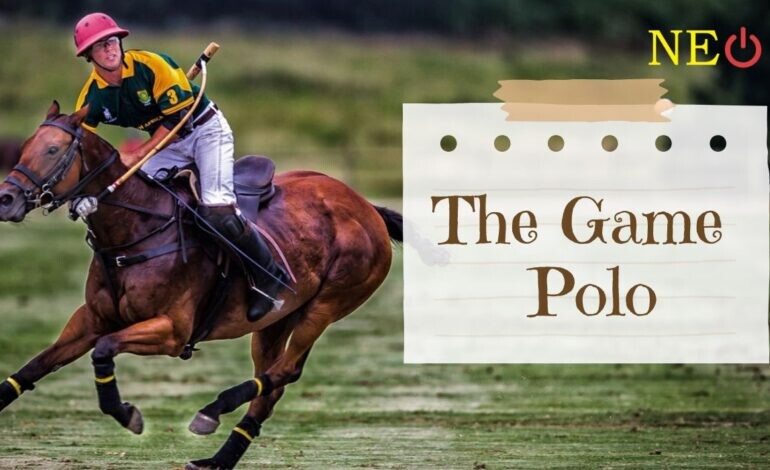IPL 2025 Latest Updates: Teams, Captains, Venues and More You Need To Know!
IPL 2025: 18th season of T20 thrills! From Kohli’s boundaries to free streaming, get all updates—teams, dates, venues, and more in this exciting blog.

Polo, which dates back to 600 BC, is the world's oldest ball sport. The word "polo" is derived from the willow root known as the "pulu," from which the polo balls were first made in Tibet more than 2000 years ago.
The game was introduced to tea planters and British soldiers in India, where it spread gradually through Asia to England. The 9th Lancers and 10th Hussars engaged in the first game in the UK in 1871. Captain Frank Henry, the man responsible for founding the Beaufort Polo Club in 1872, participated in this game as a player.

Polo is one of the world's fastest team sports, making it a unique spectator sport because you don't need to know the rules to enjoy the thrill and excitement. The following details are intended to enlighten you on the subtler aspects of the game of polo.

To score more goals than your opponent's team is the object of the game! An umpire throws the ball among the players in the middle of the field to begin play and again after each goal. The fairest way for teams to avoid being disadvantaged by wind or slopes on the pitch is to switch ends after each goal. Teams line up five yards back, side by side, and the ball is thrown in when it exits play over the sides of the field.
The defending team receives a free hit from where the ball crossed the line if the ball crosses the back line after being last touched by the attacking team. A penalty is assessed if the opposing team crosses the back line with the ball, and the attacking team receives a free shot from the 60-yard line in the opposite direction. As in football, there is no "corner" or "offside."

The ground is 300 yards long (274m) long and 200m (182m) wide, or if there are boards down the side (to help keep the ball in play) then 160 yards 182 wide. The goal posts (collapsible on severe impact for safety) are eight yards (7.3m) apart. There is a line at the centre of the ground and penalty lines, 30, 40 and 60 yards from each back line. A polo ground is roughly the size of 6 football pitches!


Each team consists of four players, two mounted ground umpires, and a referee who serves as the arbiter in the event that the umpires cannot agree. Additionally, there are timekeepers who keep score and signal the end of the chukka as well as goal judges who signal goals by waving a flag behind the goal.
Each of the four players in polo has a specific role, though, like in any team sport, these roles can be switched around.
Forward. In order to quickly transition from defence to attack, slip the opposing back, and score goals with precise rather than powerful hitting, the number one should possess swift horses.
Forward basically. The number 2 should be well mounted to mark the opposing number 3. In defence but support his number 1 in attack.
Similar to a centre half in football. He controls the speed and direction of the game and usually his passes to the forwards start an attack.
In defence the back should be able to hit strong backhanders to his members of the team and in attack likely to be seen somewhere behind waiting to snap up any chance of loose balls that come his way




Hard wood heads and bamboo shafts make up the sticks' construction. The stick's length ranges from 48 to 53 inches depending on the height of the pony being played. Instead of using the ends as in croquet, the ball is struck with either face of the head! The ball is typically made of plastic and either bamboo or willow.

Although there is no maximum height, most ponies range in height from 15 to 15.3 hands (a hand being 4 inches high). They spend a lot of their schooling learning how to stop, turn, and accelerate quickly, as well as how to ride off another pony and face another pony that is coming at them quickly. Ponies typically play no more than two chukkas in a single afternoon, with at least one chukka of rest in between. A pony that is blind in one eye, displays vice, or is not under control is prohibited from being played, as are boots or bandages for support.


The most frequent foul happens when a player who has "the right of way" is crossed by another player, which is extremely risky.
When a player is closest to the ball or is following it on its exact path, he has the "right of way." He must not cross this line if another horse may have to check to avoid a collision as a result.
However, this cannot be done at an angle, and the ponies must be level. Players may ride-off an opponent by pushing them off the ball with their pony and body (not their elbows). To thwart a shot, a player may use his stick to hook an opponent's stick, but not higher than shoulder level. It is forbidden to ride dangerously, handle roughly, or use the polo stick improperly. The severity and location of the foul determine the appropriate penalty.
IPL 2025: 18th season of T20 thrills! From Kohli’s boundaries to free streaming, get all updates—teams, dates, venues, and more in this exciting blog.
Know details of the schedule, teams, important matches, live scores, and player performances for the ICC Champions Trophy 2025. Get up-to-date on the exciting cricket tournament with professional analysis, match previews, and highlights. Watch India vs. Pakistan and other important matches without missing any action!
Chess grandmaster Gukesh Dommaraju of India defeated defending champion Chinese player Ding Liren.

